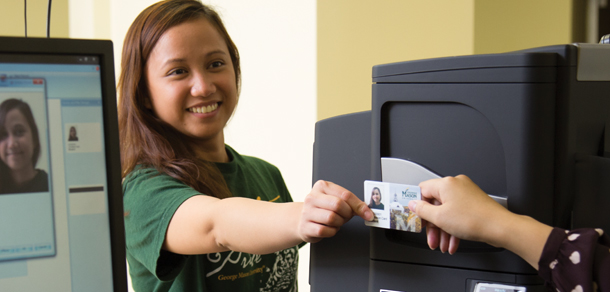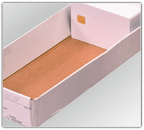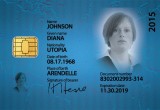Using advanced card materials with desktop printers
Adding durabitlity, fraud-resistance to over-the-counter issuance
07 November, 2016
category: Corporate, Financial, Government, Smart Cards
When discussing secure, durable credentials with advanced card materials one typically imagines a large protected warehouse with card printers pumping out thousands of cards at once on massive sheets.
This is the case for many countries issuing national ID cards and states churning out driver licenses in central issuance environments, however, the majority of cards are still produced on desktop card printers. Just because an issuer is using a desktop unit doesn’t mean the credential can’t use advanced card materials, have high security and improved durability. And, in most cases, it can all be done using existing desktop ID card printers.
Let’s say the manager of corporate badging wants to deploy a new employee ID card with greater security and durability but doesn’t want to swap out the existing card printer. With some careful planning, it should be doable.
The process might start with a call to the company’s badge supplier to explore options related to advanced card materials, such as composite cards that include polyester and Teslin. The composite materials increase the card’s durability and lifespan while also opening doors for increased security and counterfeit resistance.
After the manager makes a card material choice, then they have to figure out how to better secure the credential. There are a number of options – different text, inks, holograms and designs – that can be embedded deep within the substrate layers of the card making tampering or altering more difficult.
After choosing the composite materials and security objects, the badge supplier would prepare and pre-print the certain elements of the cards and ship them to the company. At the point of issuance, the company would insert the card blanks into their existing desktop ID card printer for personalization, just as they had done in the past.
There could be some differences depending on the advanced card material used by the company, says Pierre Scaglia, global segment manager for Secure Credentials at PPG Industries.
A plain PVC card could have certain security elements pre-printed and then be personalized with biographical and other data at the time of issuance. An overlay laminate could then be used to prevent alteration of that personalization.
An issuer using advanced card materials would use a similar process but would have more options. Using Teslin or other advanced materials an issuer could create card blanks with security and data embedded deep in the card body, Scaglia explains. This would make it more difficult to counterfeit the card while adding durability. “You can embed valuable data to the core material prior to lamination,” he explains.
The card blanks would then be personalized with the biographical data and laminated so that the data can’t be altered. Laminates with a hologram can also increase the security, Scaglia says. Desktop card printers can be equipped with a laminator so an employee would insert the card blank, it would be personalized with the biographical data and then laminated all in one step.
While the security features available for a straight PVC card versus a composite card may be similar, the true advantage of the composite card in a desktop issuance environment is lifespan of the card, says Josh Nippoldt, director of product marketing for consumables at HID Global.
Enter polycarbonate
The primary difference between PVC, composite and polycarbonate cards is lifespan. PVC has the shortest while polycarbonate the longest and composite cards sit in the middle, says Nippoldt.
Polycarbonate is popular and used in many national ID programs around the world and some states in the U.S. are starting to use it for driver licenses. The vast majority of these use cases have the polycarbonate credentials issued from a central facility because of the complexity and equipment required for laser engraving data onto the credentials.
There are laser engraving desktop card printers but they are newer, not yet widespread, and five to 10 times more expensive than typical desktop printers, explains Nippoldt.
That additional cost gets the issuer a credential that is more tamper resistant than an ID produced on typical dye sublimation or retransfer printers, he says. “You can’t change the data and you get tactile personalization that you can feel.”
The additional expense of laser engraving is a barrier to entry for some enterprises, but it also means it’s more difficult for counterfeiters as well. There are other solutions that use low-powered laser engraving of holographic films that can be personalized to the cardholder, Nippoldt says.
Conclusion
While laser engraving of polycarbonate cards on the point desktop is still not the norm, there are solid steps that issuers can take to create more secure and durable ID cards using their existing desktop card printers.
Composite cards containing a mix of materials including polyester and Teslin can go a long way to reducing the weaknesses – both in durability and security – associated with 100% PVC cards.




